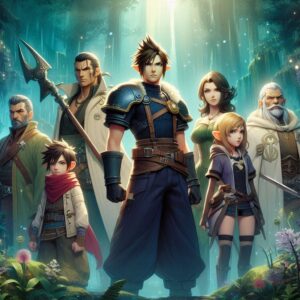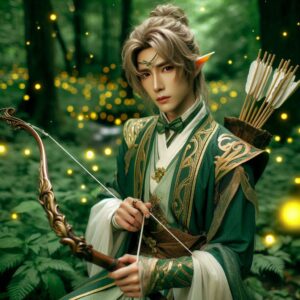Video Games and the Movie Industry
The adaptation of video games into movies has risen to some of the most ambitious cinematic projects. Titles like “Resident Evil,” “Tomb Raider,” and “Sonic the Hedgehog” began as successful video games and transitioned into commercially and critically acclaimed films. Modern games often contain complex story arcs, well-developed characters, and immersive worlds, making them ripe for cinematic storytelling. Hollywood sees this as an opportunity to tap into pre-existing fan bases, which can translate into box office success.
 Popular movies adapted into video games allow fans to engage more deeply with their favorite cinematic stories. Iconic film franchises such as “Star Wars,” “Harry Potter,” and “The Matrix” have all inspired video game versions, extending their narratives and allowing fans to experience these worlds interactively. They provide new content, side stories, and character perspectives not explored in the films. This interactivity adds a layer of immersion that movies alone cannot offer, allowing fans to become active participants in the stories they love.
Popular movies adapted into video games allow fans to engage more deeply with their favorite cinematic stories. Iconic film franchises such as “Star Wars,” “Harry Potter,” and “The Matrix” have all inspired video game versions, extending their narratives and allowing fans to experience these worlds interactively. They provide new content, side stories, and character perspectives not explored in the films. This interactivity adds a layer of immersion that movies alone cannot offer, allowing fans to become active participants in the stories they love.
Games like “Uncharted” and “The Last of Us” have been praised for their cinematic quality, using advanced graphics, motion capture, and storytelling techniques akin to those used in modern filmmaking. Films have started incorporating more elements traditionally found in video games, such as branching narratives and interactive features in some experimental projects.
Motion capture technology allows for more realistic character movements and expressions, enhancing the overall storytelling experience. Games like “L.A. Noire” pioneered facial recognition technology, which has since been adopted by filmmakers to create more lifelike characters.
Studios and developers frequently work together to launch simultaneous movie-game releases, creating a unified branding experience. The release of a new superhero film often coincides with a video game that expands on the movie’s storyline, offering fans a more comprehensive universe.
Popular game characters are integrated into movie merchandise, from action figures to posters, creating a multi-platform marketing strategy. Film characters and themes are frequently featured in video games’ downloadable content (DLC) and special event tie-ins.
Gaming’s Impact on Music
Video games such as “The Legend of Zelda,” “Final Fantasy,” and “Halo” feature soundtracks that have become deeply embedded in popular culture. They are important in building the game’s atmosphere, setting the tone, and enhancing the overall user experience. Composers like Koji Kondo, Nobuo Uematsu, and Martin O’Donnell have been praised for their work in the gaming industry, earning them a place among the greats in the field of music composition. Events like “The Video Games Live” concert series showcase orchestral performances of game music, demonstrating its significant cultural impact.
Titles such as “Grand Theft Auto,” “Tony Hawk’s Pro Skater,” and “FIFA” have integrated popular songs into their gameplay, creating curated in-game radio stations and soundtracks. The “Grand Theft Auto” series is known for its diverse and extensive in-game radio stations that feature various genres of music, from hip-hop to rock to electronic. This inclusion of real music allows players to discover new artists while enjoying the game. Sports games like “FIFA” and “NBA 2K” regularly feature a blend of established hits and emerging talent, connecting gamers with the latest in music trends.
 Rhythm-based games such as “Guitar Hero,” “Rock Band,” and “Dance Dance Revolution” have introduced millions of players to various artists and tracks. These games require players to interact with the music directly, playing along with the guitar, drums, or singing, thus creating a deeper connection between the player and the music. Unknown artists and lesser-known tracks have found mainstream popularity after being featured in these games. They serve as a discovery tool for players and a promotional avenue for artists, enabling musicians to reach audiences who might not encounter their work through traditional channels.
Rhythm-based games such as “Guitar Hero,” “Rock Band,” and “Dance Dance Revolution” have introduced millions of players to various artists and tracks. These games require players to interact with the music directly, playing along with the guitar, drums, or singing, thus creating a deeper connection between the player and the music. Unknown artists and lesser-known tracks have found mainstream popularity after being featured in these games. They serve as a discovery tool for players and a promotional avenue for artists, enabling musicians to reach audiences who might not encounter their work through traditional channels.
Video games offer a unique form of engagement where music is an active component of gameplay. Games such as “Journey” and “Shadow of the Colossus” utilize adaptive soundtracks that change dynamically based on the player’s actions, creating a personalized musical experience. These adaptive scores are designed to respond to the in-game environment and the player’s choices, providing a more immersive and emotionally resonant experience.
Platforms like “Fortnite” and “Roblox” have hosted live performances by major artists, attracting millions of attendees. Events like Travis Scott’s virtual concert in “Fortnite” and Lil Nas X’s performance in “Roblox” have set new precedents for music experiences, blending gaming and live music in innovative ways. These virtual concerts offer unique opportunities for artists to engage with fans and reach a wide audience without the limitations of physical venues.
Gaming and Fashion
Derived from the words “costume” and “play,” cosplay involves dressing up as characters from video games, anime, movies, and other media. This practice has gained massive popularity, becoming a significant subculture within the broader gaming community. Cosplay conventions such as Comic-Con, Anime Expo, and Gamescom draw thousands of attendees, many of whom spend months meticulously crafting their costumes. Characters from games like “Overwatch,” “Final Fantasy,” and “League of Legends” are favorite cosplay subjects, demonstrating the strong influence of gaming on costume design. Cosplay has become a staple in social media, with platforms like Instagram, TikTok, and YouTube serving as major outlets for cosplayers to showcase their work. These platforms allow cosplayers to reach a global audience, further cementing gaming’s role in shaping contemporary fashion trends.
Prestigious fashion brands have collaborated with video games to create exclusive collections that blur the line between virtual and real fashion. Louis Vuitton partnered with “Final Fantasy” to feature the character Lightning in their advertising campaigns, utilizing her as a virtual model. Moschino teamed up with “The Sims” to produce a line of clothing inspired by the game’s iconic aesthetics. These partnerships include limited-edition items that create a sense of exclusivity and desirability.
 In many video games, players have the option to customize their characters’ appearance through in-game skins, outfits, and accessories. Titles such as “Fortnite,” “Animal Crossing: New Horizons,” and “Apex Legends” provide extensive customization options, allowing players to express their individuality and style. Players seek the latest skins and outfits to keep their avatars looking fresh and stylish, paralleling trends observed in physical fashion markets.
In many video games, players have the option to customize their characters’ appearance through in-game skins, outfits, and accessories. Titles such as “Fortnite,” “Animal Crossing: New Horizons,” and “Apex Legends” provide extensive customization options, allowing players to express their individuality and style. Players seek the latest skins and outfits to keep their avatars looking fresh and stylish, paralleling trends observed in physical fashion markets.
Virtual fashion shows and digital clothing lines are gaining traction, leveraging technology like augmented reality (AR) and virtual reality (VR) to create immersive fashion experiences. Brands such as Balenciaga have experimented with digital showcases.
Graphics from iconic video games and gaming consoles are frequently featured on apparel such as t-shirts, hoodies, and sneakers. Brands like Supreme, Nike, and Adidas have released limited-edition collections inspired by gaming icons and aesthetics. Nike has collaborated with the gaming platform “PlayStation” to create themed sneakers, and Adidas has produced shoes inspired by “Dragon Ball Z.” These collaborations result in highly sought-after items that often sell out quickly.
Professional gaming teams and individual players collaborate with fashion brands to produce merchandise that caters to their fans and the broader fashion market.
Changes in Communication and Social Interaction
Online multiplayer games such as “World of Warcraft,” “Fortnite,” and “League of Legends” offer in-game chat functionalities that allow players to communicate with each other. These platforms utilize text and voice chat to coordinate strategies, share information, and foster social interaction. Originally developed for gamers, Discord provides voice, video, and text chat services, allowing players to form communities, both small and large. These communities provide a platform for ongoing social interaction and relationship building.
Video games have contributed to the evolution of language through the development of gaming slang and terminology. Phrases such as “GG” (good game), “nerf” (weaken), and “noob” (new or inexperienced player) have permeated mainstream culture. The widespread use of this slang in everyday conversations, social media, and even marketing campaigns reflects the significant linguistic impact of gaming culture.
The social aspect of gaming has given rise to vast networks of players who gather around shared interests, goals, and experiences. These communities form within and around specific games, providing a social framework that enhances the gaming experience. Platforms like Twitch and YouTube Gaming have transformed how communities interact, with live streaming and video content enabling direct engagement between streamers and their audiences. Large-scale tournaments and competitions attract viewers and participants worldwide. Fans rally behind teams and players, forming fan clubs and support networks.
The Cross-Pollination of Media
Graphic novels, comic books, and novels based on video game franchises allow for further exploration of game worlds, providing backstory and character development that may not fit within the confines of gameplay. Franchises like “Assassin’s Creed” and “Mass Effect” feature extensive expanded universes explored through written media.
Classic literary works are adapted into video games, bringing timeless stories to new audiences. Engaging video game adaptations of books, such as “Alice in Wonderland” and “The Lord of the Rings,” introduce literary masterpieces to younger generations, combining traditional narratives with interactive play.